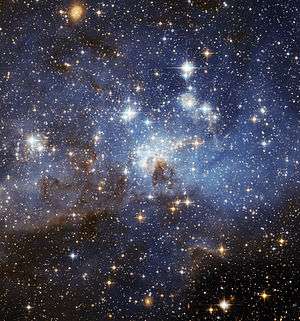FU Orionis star


In stellar evolution, an FU Orionis star (also FU Orionis object, or FUor) is a pre–main-sequence star which displays an extreme change in magnitude and spectral type. One example is the star V1057 Cyg, which became 6 magnitudes brighter and went from spectral type dKe to F-type supergiant. These stars are named after their type-star, FU Orionis.
The current model developed primarily by Lee Hartmann and Scott Jay Kenyon associates the FU Orionis flare with abrupt mass transfer from an accretion disc onto a young, low mass T Tauri star.[1][2] Mass accretion rates for these objects are estimated to be around 10−4 solar masses per year. The rise time of these eruptions is typically on the order of 1 year, but can be much longer. The lifetime of this high-accretion, high-luminosity phase is on the order of decades. However, even with such a relatively short timespan, as of 2015 no FU Orionis object had been observed shutting off. By comparing the number of FUor outbursts to the rate of star formation in the solar neighborhood, it is estimated that the average young star undergoes approximately 10–20 FUor eruptions over its lifetime.
The prototypes of this class are: FU Orionis, V1057 Cygni, V1515 Cygni,[3] and the embedded protostar V1647 Orionis,[4] which erupted in January 2004.
See also
References
- ↑ Bertout, C. "T Tauri Stars-Wild as Dust". Annu. Rev. Astron. Astrophys. 27: 351. Bibcode:1989ARA&A..27..351B. doi:10.1146/annurev.aa.27.090189.002031.
- ↑ Reipurth, B., FU Orionis eruptions and early stellar evolution, Bibcode:1990IAUS..137..229R
- ↑ http://simbad.u-strasbg.fr/sim-id.pl?protocol=html&Ident=V1515+cyg
- ↑ http://simbad.u-strasbg.fr/sim-id.pl?protocol=html&Ident=V1647+ori
- Juhan Frank, Andrew King, Derek Raine (2002). Accretion power in astrophysics, Third Edition, Cambridge University Press. ISBN 0-521-62957-8.
External links
- The Furor over FUOrs (15 November 2010)
- Discovery of possible FU-Ori and UX-Ori type objects (18 November 2009)
- http://web.archive.org/web/20060831060814/http://www.aavso.org:80/vstar/vsots/0202.shtml
